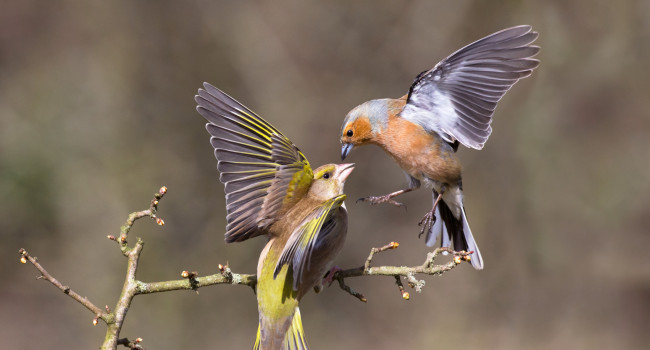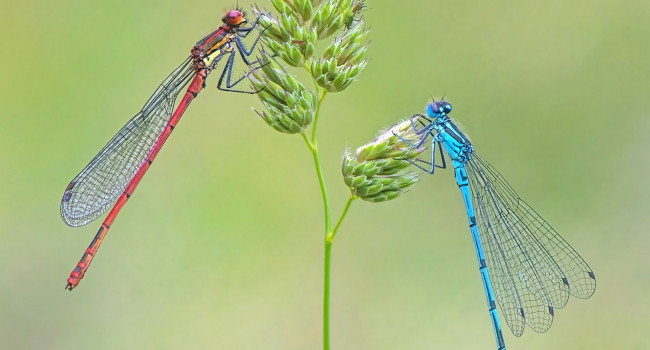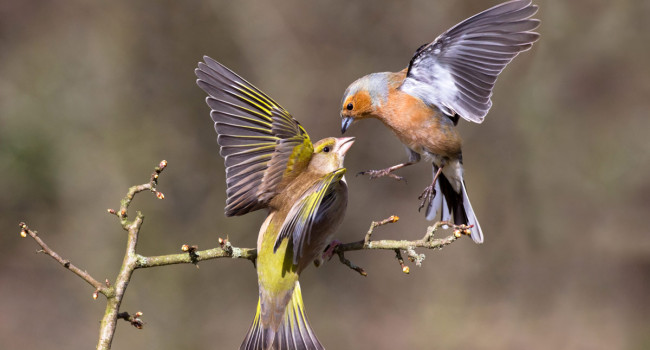Building for bats in an urban world
04 Feb 2020 | No. 2020-04
A new study by the British Trust for Ornithology (BTO) and the University of Turin shows how to minimise impacts of urban growth on bats at a time when the need for new housing often hits the headlines.
Urbanisation is amongst the most ecologically damaging changes in land use, posing significant threats to global biodiversity. Most bat species are threatened by urbanisation, although urban areas can also offer important roosting and foraging opportunities. Could developers consider how bats are likely to respond to urbanisation, and take steps to minimise negative impacts?
In a paper just published in the international journal Biological Conservation, scientists used bat calls collected by volunteer citizen scientists taking part in the Norfolk Bat Survey to address this question. The huge acoustic dataset, consisting of over one million recordings gathered between 2013 and 2016, was used to show the importance of habitat features, including buildings and roads, waterbodies and trees, to bats in urban areas. This is especially important given that parts of the study region have been identified as target areas to create new, affordable housing. The researchers also considered possible future scenarios of urban development, assuming an increase in either urban habitat or woodland.
Barbastelle, Brown Long-eared Bat and Myotis species emerged as the species most vulnerable to urbanisation. Overall, lakes and woodland patches were the most important habitat types for bats, while urban areas were often avoided. The results suggest that to build for bats, urban growth should expand on existing urban blocks, rather than create new urban patches. This would minimise impacts on areas that bats use for commuting or foraging. The study also showed that creating bat-friendly habitats of an area at least equal to any new urban settlement could provide mitigation for the negative effects of urbanisation. New patches of woodland should also be encouraged, while preserving unmanaged areas within large commercial coniferous plantations would support their use by bats.
Dr Fabrizio Gili, lead author of the study, said “This study highlights how the contribution of citizen scientists can really make a difference in research projects. The volunteer-based data collection approach allowed us to get a clear view of urban habitat exploitation by bats in Norfolk, and provides practical suggestions for urban development and woodland management.”
Dr Jenni Border, Research Ecologist at the British Trust for Ornithology (BTO), said “Our findings provide recommended actions that urban planners could implement in order to minimise impacts on bats when new housing developments are planned, with wider benefits to society through the creation of bat-friendly green space”.
Read the paper in Biological Conservation here.
Contact Details
Paul Stancliffe
(BTO Media Manager)
Office: 01842 750050
(9am to 5:30pm Mon-Thurs), (9am to 5pm Friday)
Mobile: 07585440910
Email: press [at] bto.org ()
Images are available for use alongside this News Release.
Please contact images [at] bto.org quoting reference 2020-04
The BTO has an ISDN line available for radio interviews.
Please contact us to book an interview. Office: 01842 750050
Notes to editors
Read the full paper at: www.sciencedirect.com/science/article/pii/S0006320719310274?dgcid=coauthor
This work came out of a MSc dissertation carried out by Fabrizio Gili at the University of Turin, Italy, during a placement funded through an Erasmus Traineeship, and under the supervision of the BTO.
The BTO is the UK's leading bird research charity. A growing membership and up to 60,000 volunteer birdwatchers contribute to the BTO's surveys, collecting information that underpins conservation action in the UK. The BTO maintains a staff of 100 at its offices in Thetford, Stirling, Bangor (Wales) and Bangor (Northern Ireland), who analyse and publicise the results of surveys and projects. The BTO's work is funded by BTO supporters, government, trusts, industry and conservation organisations.www.bto.org
The University of Turin is one of Italy’s leading universities, hosting over 70,000 students, and is one of the oldest in Europe. Its goal is to produce high quality research, innovation, training and employment at national and international levels. It is an integral part of the community, acting for reviving urban and suburban areas, promoting cultural interaction, social integration and development, encouraging dialogue and insight into current realities. www.unito.it
The analysis was based on data collected through the Norfolk Bat Survey, which is led by BTO in partnership with NBIS, National Trust (Sheringham Park), Wildfowl and Wetlands Trust (Welney Wetland Centre), Sculthorpe Moor (Hawk and Owl Trust), Broads Authority (Toad Hole Cottage), RSPB, (Titchwell), Dinosaur Adventure (Lenwade), The Pennoyer Centre and the Norfolk Libraries and Information Service. www.batsurvey.org






Share this page